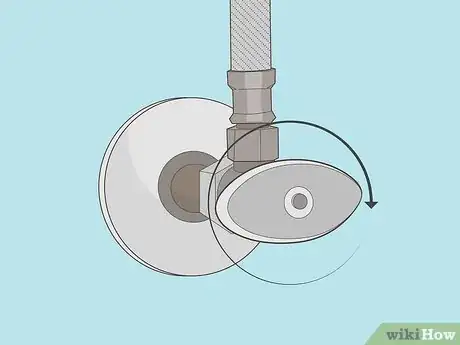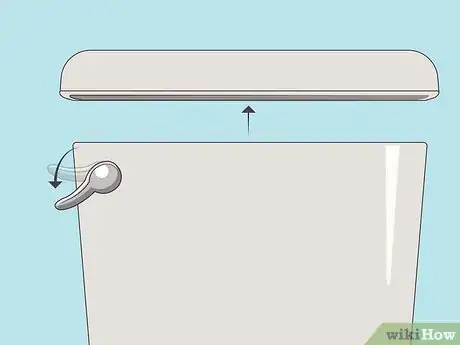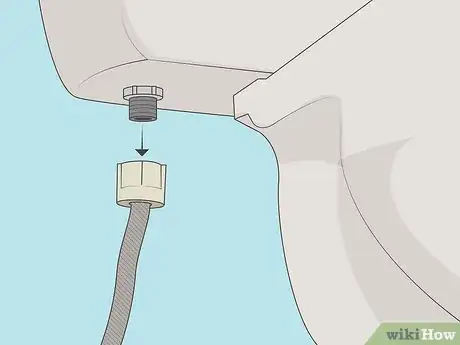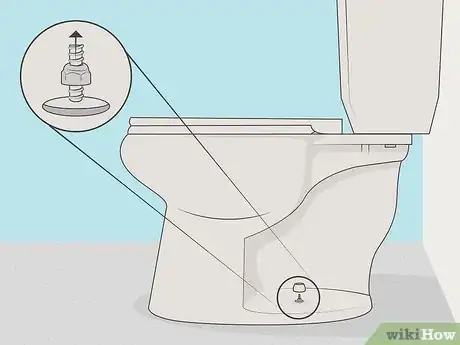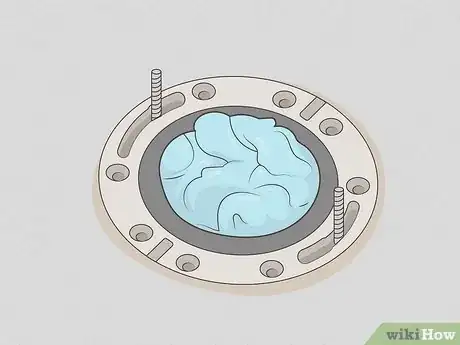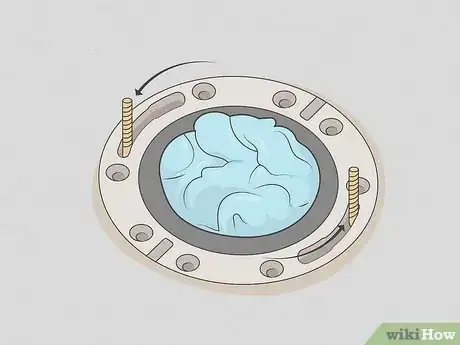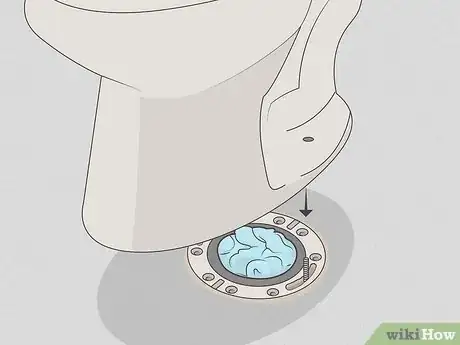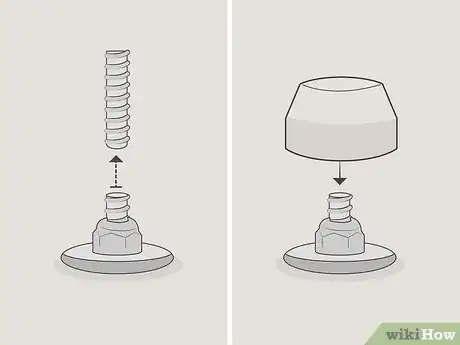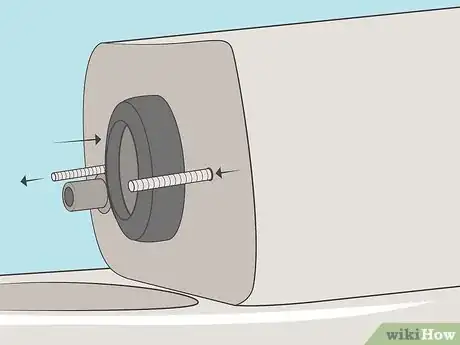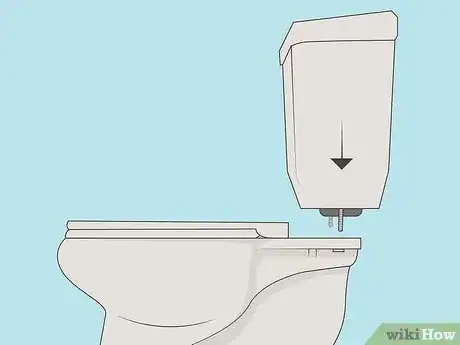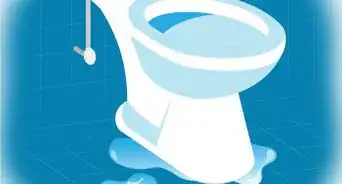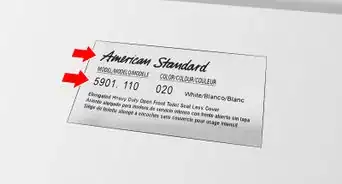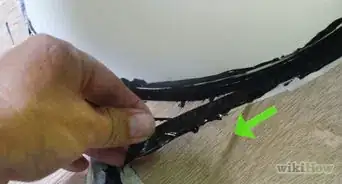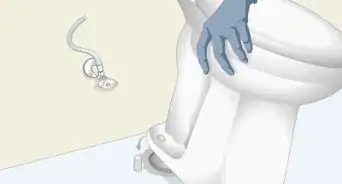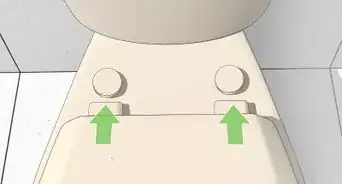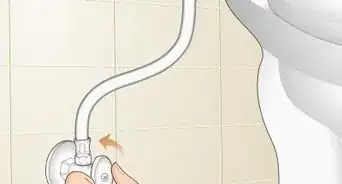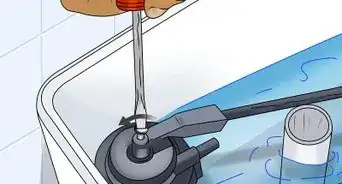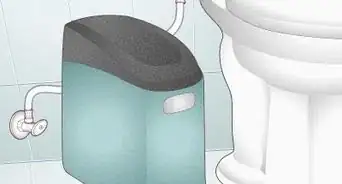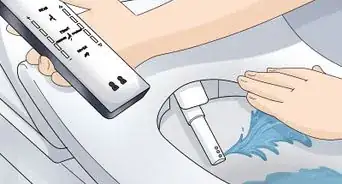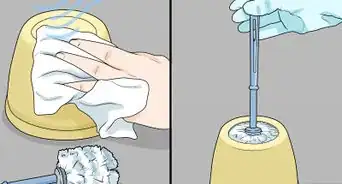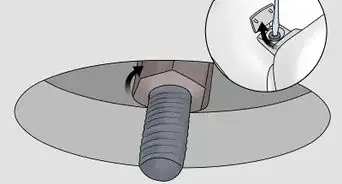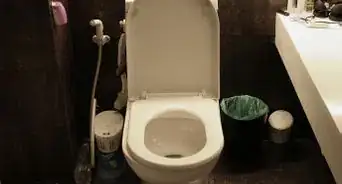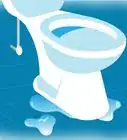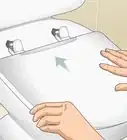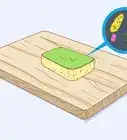This article was co-authored by Dave Jones and by wikiHow staff writer, Jessica Gibson. Dave Jones is a Professional Plumber and the Midwest Regional Vice President at Roto-Rooter Plumbing & Water Cleanup. In 1992, Jones joined Roto-Rooter as a drain service technician at the age of 18. Since then, he has risen through the ranks into positions of increasing authority. Dave served as general manager of Roto-Rooter’s Charlotte, North Carolina, and Atlanta, Georgia branches before being promoted to Contractor Area Manager and later to Regional Vice President. Dave holds Master Plumber Licenses in Pennsylvania, North Carolina, and Georgia.
There are 8 references cited in this article, which can be found at the bottom of the page.
wikiHow marks an article as reader-approved once it receives enough positive feedback. In this case, 93% of readers who voted found the article helpful, earning it our reader-approved status.
This article has been viewed 250,681 times.
Installing a new toilet is a lot easier than you may think. In fact, many homeowners choose to remove their old toilet and replace it with a new one without the help of a handyman or plumber. If you do decide to make installing a toilet your new DIY project, you should know the basics. This article will teach you how to remove your old toilet and replace it with a brand-new one to give your bathroom a breath of fresh air.
Steps
Removing the Old Toilet
-
1Measure the distance from the wall to the toilet floor bolts. It's a good idea to check the size of your toilet before you remove it, so you know the new one will fit. Place the end of a measuring tape against the wall behind the toilet and extend it until it reaches the toilet's floor bolts. If the measurement is 12 inches (30 cm), you're in luck! You have a standard size toilet.[1]
- If the distance is over 12 inches (30 cm), you may need a larger, longer, or custom toilet. Take your measurements to the hardware store to look for a toilet that will fit your space.
-
2Turn off the water at the supply valve. According to professional plumber Dave Jones, "This is usually accomplished by turning a valve to the right. If it's an older-style gate valve, it will require several turns before it closes. If it's a quarter-turn valve, you only have to turn the valve one-quarter of a 360-degree turn."[2]
- Turning off the supply valve cuts the water to the toilet, so you can replace it with less mess.
Advertisement -
3Set the lid aside and flush the toilet to drain the basin and the bowl. Put the lid in a safe spot where it won't get broken or tripped over. Then, flush the toilet a few times until you've removed as much water from the tank as possible.[3]
- You won't be able to flush all of the water out of the tank, but we'll walk you through what to do.
-
4Put on gloves and remove the rest of the water. Choose thick, heavy-duty gloves to protect yourself from bacteria. Get out a large sponge and press it into the tank, so it absorbs the remaining water. Squeeze it out into a bowl and repeat the process for the toilet bowl.[4]
- If you've got quite a bit of water left in the bowl or tank, you can use a cup to scoop it out before you switch to a sponge.
- Discard the water and thoroughly wash the bowl out.
-
5Remove the water supply line from the wall and tank. Use an adjustable wrench to unscrew the nut at the back of the toilet. Then, unscrew the water supply line nut near the stop valve that you turned to switch off the water. Pull away the water supply line and discard it.[5]
- Most plumbers recommend replacing your braided water supply line every 3 to 5 years.
-
6Unscrew the tank bolts that fasten the basin to the bowl. If the bolts aren't visible, pop off the bolt covers. Then, use a wrench to loosen the nuts that are securing the toilet to the floor. Discard the nuts and washers.[6]
- Sometimes, nuts and washers can become so rusty that you can simply remove them by hand.
- If you see caulking along the base of the toilet, carefully run a utility knife along it, so you can pull the toilet up.
-
7Lift the toilet up and away from the floor. Although you may be able to lift the entire toilet by yourself, it can help to have another person lift one side of the toilet. Lift with your and keep your back straight, so you don't injure yourself. Once you pull the toilet up from the floor, remove it from your bathroom.[7]
- If you're setting the toilet down in your home instead of outside or in a garage, place it on an old towel or tarp until you can throw it away.
- If you're working by yourself and want to make the toilet lighter before you remove it, unscrew the bolts from the inside of the tank. Then, lift the tank away so you're only pulling up the toilet base.
-
8Pry away the wax seal from the toilet flange. The flange is the circular opening and you'll see brown wax covering it. Take a putty knife to scrape away the waxy residue and debris. Leave the metal or plastic flange in place.[8]
- If there's still a lot of sticky wax on the flange, wipe it off using a damp cloth.
- If the flange is cracked or damaged, replace it before you continue installing the toilet.
-
9Plug the drain opening with an old rag or cloth. Stuffing the drain hole in the floor will prevent sewage fumes from wafting into your bathroom before you install the new toilet. It will also block tools from accidentally falling into the hole.[9]
Installing the New Toilet
-
1Replace the toilet bolts on the flange. New toilets usually include a new set of toilet bolts, so unscrew the old nuts with a wrench and pull out the bolts. To insert the new bolts, put the bolt head facing down into the large opening on the flange. Then, slide the bolt to the narrow end of the slot and repeat this for the opposite side.[10]
- Toilet bolts are also called closet bolts.
-
2Fit a new wax ring around the flange. Most new toilets come with a wax ring, but it's always a good idea to check. Open the new wax ring and center it on the flange. If your wax ring has a sloped edge, place it upside down so the narrow end of the wax ring touches the flange.[11]
- Wax rings last 20 to 30 years and there's maintenance involved. If your toilet starts leaking near the base, you'll know it's time to replace the wax ring.
-
3Center the toilet base over the toilet bolts on the floor. Carefully pick up the new toilet base and set it down directly over the flange so the bolts extend through the bottom sides of the toilet. Then, press down and rock the toilet back and forth so it seals to the wax ring.[12]
- It can help to have another person lifting the toilet or guiding it onto the bolts.
- Once you've pressed the toilet to the wax ring, don't remove the toilet again or you'll break the seal.
-
4Tighten the toilet bolts on the base. Set a plastic washer onto each bolt and screw a nut onto the bolts by hand. Then, use a wrench to finish tightening the bolts, but go back and forth between the two bolts. Stop tightening as soon as the nut is snug. This way, you're applying even pressure on the toilet so it stays level and the bowl doesn't crack.[13]
- The toilet bolts will stick way up even after you've installed the washers and nuts. This is completely fine, since you'll saw them down.
-
5Cut the excess length from the bolts and pop on decorative caps. Use a hacksaw to cut off away the excess length of the bolts—leave about 1⁄2 inch (1.3 cm) of bolt above the nut. Then, push the decorative caps over each bolt, so they're no longer visible.[14]
- Brush away the metal filings with a clean cloth or suck them up with a vacuum.
-
6Place the gasket on the tank and push the tank bolts through the holes. Turn the new tank on its side and push the rubber gasket onto the bottom opening of the tank. Then, slide the tank bolts through the inside of the tank so they extend out of the tank's bottom.[15]
- Sometimes, tanks come pre-assembled, so you may not need to do this step.
-
7Set the tank onto the toilet bowl and screw it in place. Turn the tank right side up and fit it over the bowl, so the bolts slide right into the holes on the back of the toilet bowl. Then, screw the bolts by hand before you use a wrench.[16]
- Alternate tightening the screws so you apply even pressure.
-
8Install a new water supply line and connect it to the toilet tank. Screw one end of a new supply line onto the bottom of the toilet tank. Then, screw the opposite end onto the supply valve near the wall. Tighten both ends with a wrench until the connections are snug.[17]
- You can buy braided water supply lines from hardware stores or online. They sell a variety of lengths, so you're sure to find one that will fit your toilet.
-
9Turn on the water supply valve and flush the toilet. For most valves, turn them to the left. For an older-style gate valve, keep turning until the valve opens. You should see water filling the toilet tank. Wait until it's full and flush the toilet.[18]
- Check around the toilet base and near the water supply line for leaks. You may have to tighten the bolts if you see them leaking.
-
10Caulk around the front of the toilet only if there is a visible gap. Leave the back of the toilet uncaulked so that water can escape if a leak forms and you can detect it. An undetected leak could cause the subfloor under the toilet to rot out and fail. Insert a tube of silicone tub and tile caulk into a caulk gun. Run the caulk along the base of the toilet, so there's no gap between the toilet and the floor. Then, drag your fingertip through the caulk to smooth the line and remove excess product.[19]
- Most caulking products require about a day to cure, so avoid mopping the floor around the toilet. Use 100% silicone caulk or one designed for kitchen and bath for a faster cure time and mildewcide properties.
Expert Q&A
-
QuestionWhat is the first step when installing a toilet?
 Dave JonesDave Jones is a Professional Plumber and the Midwest Regional Vice President at Roto-Rooter Plumbing & Water Cleanup. In 1992, Jones joined Roto-Rooter as a drain service technician at the age of 18. Since then, he has risen through the ranks into positions of increasing authority. Dave served as general manager of Roto-Rooter’s Charlotte, North Carolina, and Atlanta, Georgia branches before being promoted to Contractor Area Manager and later to Regional Vice President. Dave holds Master Plumber Licenses in Pennsylvania, North Carolina, and Georgia.
Dave JonesDave Jones is a Professional Plumber and the Midwest Regional Vice President at Roto-Rooter Plumbing & Water Cleanup. In 1992, Jones joined Roto-Rooter as a drain service technician at the age of 18. Since then, he has risen through the ranks into positions of increasing authority. Dave served as general manager of Roto-Rooter’s Charlotte, North Carolina, and Atlanta, Georgia branches before being promoted to Contractor Area Manager and later to Regional Vice President. Dave holds Master Plumber Licenses in Pennsylvania, North Carolina, and Georgia.
Master Plumber, Roto-Rooter Plumbing & Water Cleanup Be sure you have toilet flange bolts and a new wax ring for sealing your toilet to the bathroom floor. These normally come in the box when you purchase a new toilet. Also, if you didn’t get any toilet flange bolts with your new toilet, go to a hardware store or home center and purchase a pair of those.
Be sure you have toilet flange bolts and a new wax ring for sealing your toilet to the bathroom floor. These normally come in the box when you purchase a new toilet. Also, if you didn’t get any toilet flange bolts with your new toilet, go to a hardware store or home center and purchase a pair of those. -
QuestionWhere should I put the old toilet?
 Dave JonesDave Jones is a Professional Plumber and the Midwest Regional Vice President at Roto-Rooter Plumbing & Water Cleanup. In 1992, Jones joined Roto-Rooter as a drain service technician at the age of 18. Since then, he has risen through the ranks into positions of increasing authority. Dave served as general manager of Roto-Rooter’s Charlotte, North Carolina, and Atlanta, Georgia branches before being promoted to Contractor Area Manager and later to Regional Vice President. Dave holds Master Plumber Licenses in Pennsylvania, North Carolina, and Georgia.
Dave JonesDave Jones is a Professional Plumber and the Midwest Regional Vice President at Roto-Rooter Plumbing & Water Cleanup. In 1992, Jones joined Roto-Rooter as a drain service technician at the age of 18. Since then, he has risen through the ranks into positions of increasing authority. Dave served as general manager of Roto-Rooter’s Charlotte, North Carolina, and Atlanta, Georgia branches before being promoted to Contractor Area Manager and later to Regional Vice President. Dave holds Master Plumber Licenses in Pennsylvania, North Carolina, and Georgia.
Master Plumber, Roto-Rooter Plumbing & Water Cleanup Sit the toilet on a towel or old blanket to prevent damage to your floor until you’re able to remove the toilet from the bathroom.
Sit the toilet on a towel or old blanket to prevent damage to your floor until you’re able to remove the toilet from the bathroom. -
QuestionIs it necessary to caulk around the base of the toilet?
 Community AnswerIf you caulk around the base, you will not know if it is leaking. It's a nice touch, but not good to do. If the toilet sits level and looks good to the floor, then don't caulk it. I have installed many toilets. If it does not leak, let it go.
Community AnswerIf you caulk around the base, you will not know if it is leaking. It's a nice touch, but not good to do. If the toilet sits level and looks good to the floor, then don't caulk it. I have installed many toilets. If it does not leak, let it go.
Things You'll Need
- Gloves
- Old cloth or rag
- Toilet wax ring
- 2 flange bolts
- Putty knife
- Caulking
- Wrenches
- Screwdriver
- Hacksaw
- New toilet
- New water supply line
References
- ↑ https://www.bobvila.com/articles/how-to-replace-a-toilet/
- ↑ Dave Jones. Master Plumber, Roto-Rooter Plumbing & Water Cleanup. Expert Interview. 13 December 2021.
- ↑ Dave Jones. Master Plumber, Roto-Rooter Plumbing & Water Cleanup. Expert Interview. 13 December 2021.
- ↑ Dave Jones. Master Plumber, Roto-Rooter Plumbing & Water Cleanup. Expert Interview. 13 December 2021.
- ↑ http://www.taskmap.com/How%20to%20remove%20and%20install%20a%20toilet.html
- ↑ Dave Jones. Master Plumber, Roto-Rooter Plumbing & Water Cleanup. Expert Interview. 13 December 2021.
- ↑ https://todayshomeowner.com/video/do-it-replace-a-toilet/
- ↑ https://www.ronhazelton.com/projects/how-to-remove-and-replace-a-toilet-yourself
- ↑ https://youtu.be/KG_w0RiTpvk?t=100
- ↑ Dave Jones. Master Plumber, Roto-Rooter Plumbing & Water Cleanup. Expert Interview. 13 December 2021.
- ↑ https://www.ronhazelton.com/projects/how-to-remove-and-replace-a-toilet-yourself
- ↑ Dave Jones. Master Plumber, Roto-Rooter Plumbing & Water Cleanup. Expert Interview. 13 December 2021.
- ↑ https://todayshomeowner.com/video/do-it-replace-a-toilet/
- ↑ Dave Jones. Master Plumber, Roto-Rooter Plumbing & Water Cleanup. Expert Interview. 13 December 2021.
- ↑ https://www.bobvila.com/articles/how-to-replace-a-toilet/
- ↑ https://www.ronhazelton.com/projects/how-to-remove-and-replace-a-toilet-yourself
- ↑ https://youtu.be/vXnU_w7iWrA?t=143
- ↑ Dave Jones. Master Plumber, Roto-Rooter Plumbing & Water Cleanup. Expert Interview. 13 December 2021.
- ↑ https://youtu.be/7Vv6t_14kao?t=64
About This Article
To install a new toilet, first turn off the water supply and remove the old toilet. Fit a new seal around the drain hole in the floor and make sure it’s tight. Then, lift the toilet onto the floor bolts and jiggle it a bit to seal the drainage hole. Level the toilet base, then tighten the bolts and cap them. Now you can attach the water basin to the bowl of the toilet and tighten those bolts as well. To finish, reconnect the water supply and caulk the base of the toilet to seal it. If you want to learn how to break apart sealant or wax around your old toilet, keep reading the article!

